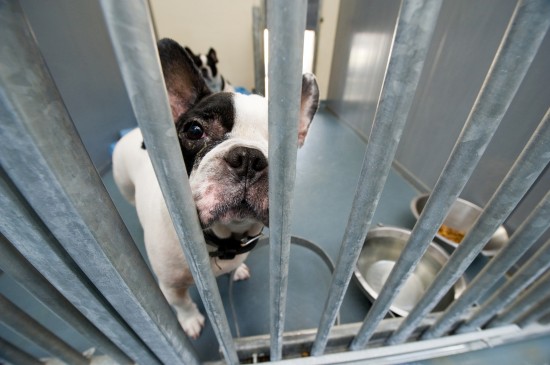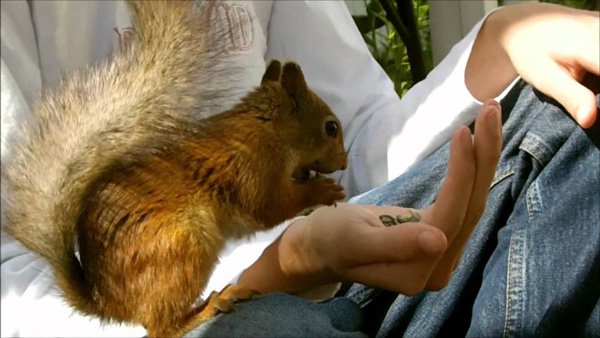

Osteosarcoma is the term used to refer to the most common form of cancer of the bone that dogs may suffer from. While bone cancer can also present in cats as well as dogs, in cats the condition is extremely rare, as is the presentation of the condition in smaller dogs such as toy breeds.
Bone cancer is a serious condition for affected dogs, with a limited range of treatment options available and often, a poor mid to long-term prognosis. Early intervention and treatment is essential to maximise the chances of managing and preventing the spread and development of Osteosarcoma in your dog, and so learning to spot the symptoms and warning signs of the condition are essential in order to give your dog the best chance of surviving the disease. Read on to find out more.
The term Osteosarcoma refers to a malignant tumour or tumours that affect the cells of the bones. Osteosarcoma is the most common form of bone cancer in dogs, although other cancers of the fibrous tissues, cartilage or blood vessels are sometimes found as the eventual diagnosis instead. Osteosarcoma is an aggressive, generally fast-growing carcinoma that most often affects the bones around the joints, such as the shoulder, the area above the hocks, the area below the knee, and around the wrist in the front legs.
While any breed and type of dog can theoretically develop Osteosarcoma, large breeds such as Great Danes, Irish Wolfhounds, German Shepherds, Rottweilers and giant dog breeds are most likely to contract the condition. Smaller dogs are much less likely to develop Osteosarcoma, and bone cancer in small dogs is considered to be rare. Although large and giant breeds are considered to be most prone to the condition, it is not considered to be a genetically inherited or hereditary condition, and so an ancestral history of Osteosarcoma is unlikely to provide elevated risk factors for the condition in your own dog. Generally, dogs around middle age are the most likely to develop or show symptoms of the condition.
The cause of Osteosarcoma or bone cancer in dogs is currently unknown. There do not appear to be any genetic or hereditary causes for the condition, despite larger breeds being much more prone to the condition than their smaller counterparts are. Dogs that have previously suffered from a fracture, break or other injury to the bone due to an injury or external trauma have been found to have a slightly elevated risk factor for the disease, although this correlation is by no means definitive.
The onset and development of bone cancer in your dog can be slow and hard to spot. Often the disease will have reached a fairly advanced stage before it is definitively identified. Sometimes, a clear tumour or mass will be visible under the skin, so it is important to check your dog’s limbs and joints regularly for any unusual lumps and bumps or other changes to their normal physical appearance.
Over time, bone cancer will lead to chronic lameness in the affected joints or limbs, and swelling and inflammation around the affected area. Due to bone cancer often presenting itself for the first time around middle age, Osteosarcoma is sometimes written off by the dog owner as the onset of arthritis, and so definitive diagnosis by your vet is essential to finding out for sure. Additionally, your dog may appear to be lethargic, less interested in food, or exhibit behavioural changes such as a tendency to grumpiness or lack of interest in play and walks.
When you take your dog along to the vet for examination, they will generally perform an x ray of the affected area to get a closer look at the bones and joints, and any growths that should not be there. Blood tests, biopsies and bone scans may also be performed.
Sadly, the mid to long-term prognosis for dogs suffering from Osteosarcoma is not a happy one. There is currently no known way of preventing the cancer from developing, and the progression of bone cancer is often fast and aggressive. The malignant tumours present will generally metastasize (grow and spread) and go on to affect other areas of the bone and limbs of the dog.
In localised cases of Osteosarcoma of the lower limbs that are caught early enough, amputation of the limb may successfully halt the spread of the disease- although this is of course not a decision to be undertaken lightly, and if the tumour is higher up or around the joints, amputation may not be possible. If the disease is found to be localised and amputation possible, this should theoretically successfully remove the area affected with the cancer and stop the disease from spreading to other areas of the body. Dogs with an amputated limb, either front or rear, do of course require some lifestyle changes to be made in order to account for this, and their owners will need to give a considerable amount of thought to how they might manage after the event. However, dogs generally manage very well with only three legs and often go on to lead full, happy lives, so this option should by no means be ruled out as untenable.
Chemotherapy is also sometimes used alongside of an amputation or removal of the affected area, or as a standalone treatment to slow or prevent the spread of the condition and reduce the size of the tumour or tumours present.
In a significant number of cases, treatment and reducing the growth and development of the cancer may not be possible, and palliative care is the only possible course of treatment. This involves managing pain and making your dog as comfortable as possible while the disease naturally runs its course.
Unfortunately, the facts and figures for the survival rate of dogs that develop Osteosarcoma are not reassuring. Only 10% of dogs are generally expected to survive for more than twelve months after diagnosis, and 60% of diagnosed dogs that undergo amputation suffering from secondary complications that often prove terminal within six months to a year.
 How And What To Feed A Sickly Dog
How And What To F
How And What To Feed A Sickly Dog
How And What To F
 Tackling Behavioural Problems In Adopted Dogs
Tackling Behaviou
Tackling Behavioural Problems In Adopted Dogs
Tackling Behaviou
 How to pick an amazing toy for your lovable pet?
How to pick an amazing toy for your lovable pet?
How to pick an amazing toy for your lovable pet?
How to pick an amazing toy for your lovable pet?
 An Introduction To The Pinscher Dog Breeds
An Introduction T
An Introduction To The Pinscher Dog Breeds
An Introduction T
 Things You Need to Understand Before Buying Pet's Stuff
Things You Need to Understand Before Buying Pet's Stu
Things You Need to Understand Before Buying Pet's Stuff
Things You Need to Understand Before Buying Pet's Stu
Copyright © 2005-2016 Pet Information All Rights Reserved
Contact us: www162date@outlook.com